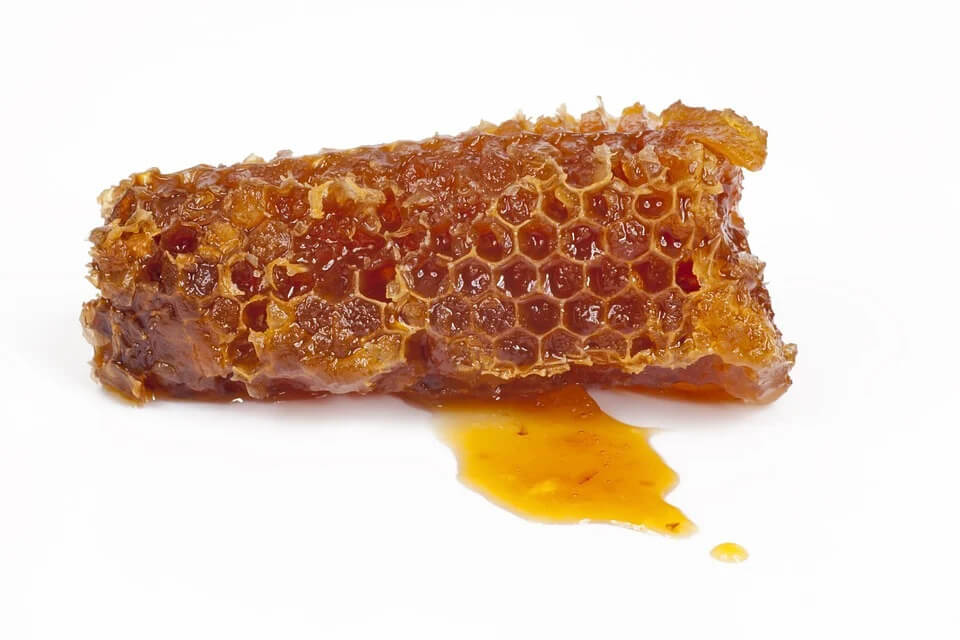
Natural honey is the nectar of flowers that the bee has processed and concentrated and stored in the hive after feeding on various plants. If the bees have fed on white sugar or sugar or fruit juices instead of the nectar of flowers and plants, the product cannot be called natural honey.
There are different types of natural honey available in the market, which will be different according to the weather conditions and the plants and flowers of the area where the honey is produced. The benefits of natural honey are different according to the composition of honey. Honey contains sucrose, maltose, glucose and fructose sugars, which are easily converted into simpler sugars.
One of the properties of honey is that, in addition to having a lot of sugars, it has about 40% less calories and due to its high energy, it has no effect on body weight. Compounds such as polyphenols are also present in honey, which have antioxidant properties. Honey is a complex mixture of carbohydrates and lipids, minerals, vitamins, enzymes. The compounds inside honey change the physical and chemical properties of honey, such as viscosity, affect moisture absorption and crystallization. The benefits of natural honey are different according to its ingredients.
The properties of natural honey can be generally divided into two separate groups. Therefore, people can benefit from the medicinal properties of natural honey in two ways, including oral use and topical use in the form of lotion. It should be noted that if you include natural honey as a constant and permanent member of your plans and meals, you have actually guaranteed the health of your body 100%.

Because the properties of natural honey are not limited to a few specific items. Rather, it has a very wide and at the same time diverse range. In such a way that it is effective in improving complications with completely different domains.
One of the most reliable ways to identify natural honey is to perform specialized tests on it in a reputable honey laboratory.
Although such tests are not cost-effective for the final consumer due to their costs, beekeepers and major buyers can assure their buyers that their honey is natural by having a honey test sheet.

One of the main indicators that is examined in the honey test is the amount of sucrose in it.
Sucrose is a type of natural sugar that is found in various plants, including sugar cane and beet sugar. The amount of this substance in the nectar of plants is very low, and that is why the low sucrose content of honey is usually considered a sign that honey is natural.
Sucrose test is done in order to determine whether the honey is obtained from the nectar of plants or whether the bees were fed artificial food such as sugar water or sugar and pollen, etc.
Soccer standards are different in different countries. For example, in the United States, the maximum allowed amount of this substance is 5%, while the European Union considers honey with a maximum of 7% sucrose to be natural.
According to Iranian standards, the maximum amount of sucrose allowed is 5%, and honeys with less than 5% sucrose are sold as natural honey. Also, honeys whose percentage of sucrose is less than 3 are known as high-quality honey (of course, if other parameters are also good).
Note: The percentage of sucrose in honey is very dependent on the nectar source. For example, the nectar of plants such as juniper and coriander naturally have low sucrose, and the natural honey obtained from them has sucrose below 3. But the nectar of plants like Konar is high in sucrose, and the honey obtained from the nectar of this plant will have a sucrose percentage of about 5 or more, even up to 14.
According to the Codex standard, after the ratio of fructose to glucose, the second most important quality indicator in honey is the amount of proline in it.
Proline is a special and different type of amino acid that is found in large quantities in most plants and it is almost impossible to produce it artificially in the laboratory. As a result of the presence of sufficient amounts of proline in honey, it indicates that the honey was obtained from the nectar of flowers and plants and not from feeding bees with sugar.
Proline in natural honey should be at least 180 mg/kg. Values lower than this amount are a sign of poor quality or nutritional value of honey.
The main structure of proline is as follows:

Anila’s apiary has started its professional work since 2011.
This apiary is trying to improve its products by studying and researching and using the knowledge of professors…